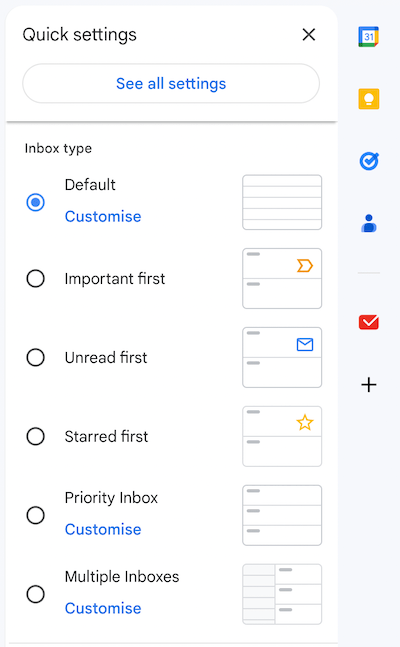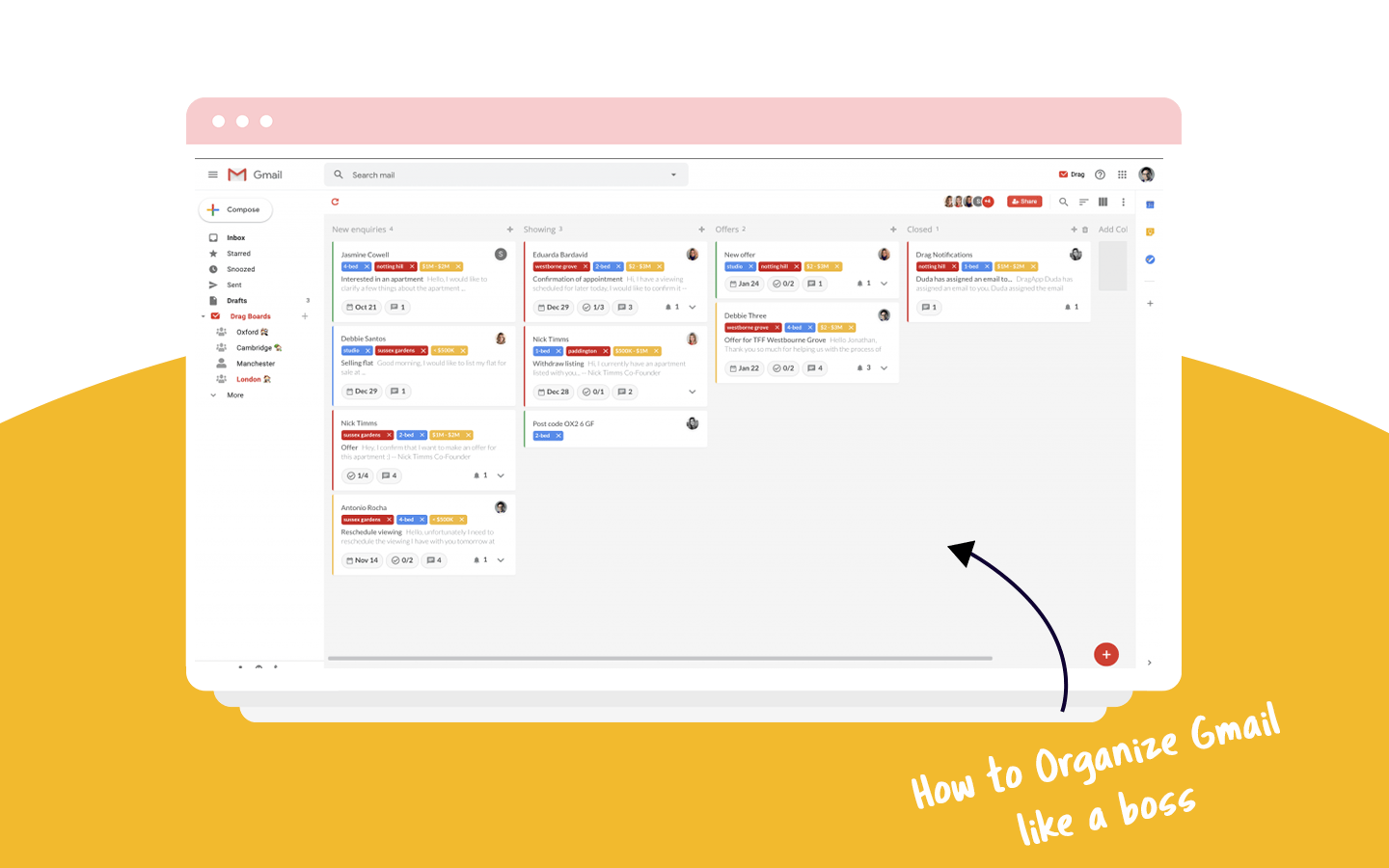
As with almost everything you use daily, emails get naturally messy when you don’t make an effort to keep them well sorted. Although it can be hard to start, there are ways to combat the clutter and learn how to organize Gmail to keep things in order.
With an efficient, consistent and custom organization system, users are able to make their email work for them, not the other way around. That is, instead of wasting time looking for incoming messages and sorting through endless files, they can simply log in and have their digital workspace ready. Keep reading for our best tips and tricks on how to organize Gmail to make it the ideal starting point.
The basics of email
Emails are on the internet as an online version of mailboxes. They became very popular from the beginning of the internet as a productive form of interaction – at that time when no other possible productive communication existed.
Even now, with instant messaging and social media, emails are still very popular. Many other solutions have come and gone, but email has remained a reliable solution that integrates other solutions, acting as a digital hub for online identity.
In fact, Gmail statistics show that it has almost 2 billion unique users, including personal and business email accounts. People across the world rely on email as a way to communicate, work and interact with various other people and companies.
That means that as a cultural part of the internet experience, emails have a strong reputation, and it doesn’t seem to be fading, just evolving into the overall digital space to work from. Many businesses, in fact, operate directly from their email accounts. Take customer service, for instance, in which a quick reply is essential. Or travel agencies, that rely on email to communicate and document every step of their services, on the vendor and client side.
But there’s an important aspect to all of this: users need to know how to organize Gmail in a way that benefits their workflow. From keeping a decluttered space to categorizing messages, there are many tips and tricks to streamline the email interface and optimize work productivity.
How to organize Gmail: the components
Gmail offers many native tools to help you organize your inboxes, such as folders, labels, and even tabs. First, let’s discuss the definitions and differences between them:
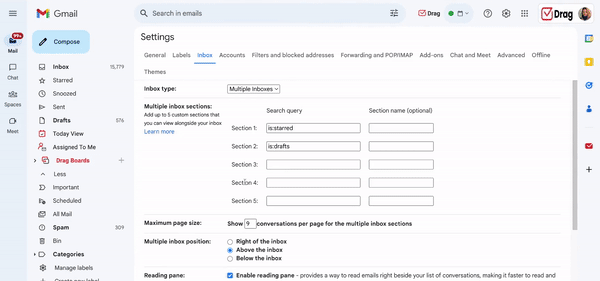
Labels: labels are a simple way to categorize your messages. For example, you can define that all messages coming from specific friends will get the label “Friends”, while others coming from work will get the label “Work”. You can also attribute the next steps to your labels’ names, such as “Follow Up” and “Pay”.
Folders: these are standard steps of your emails, such as “Sent”, “Inbox”, “Starred” or “Drafts”. They help you separate your incoming and outgoing messages but also make it easier to get back to any of them later.
Tabs: Tabs are the categories of your messages. It’s a simple filter that separates each message into different categories, making your inbox less cluttered. You can flip between your regular mail, promotional messages and social notifications.
Once you categorize your messages correctly, you’re much more capable of keeping this organization in the future.
The essential settings to organize your Gmail
Before investing in additional software or deeper organization techniques, the first step is setting up your Gmail in a way that works for you, instead of against you. Some of Google’s native tools allow you to make the interface much more efficient and easier to work with.
Labels and folders: your best friends in Gmail
To tag your messages properly and create your first label, just go to Create a new label, on your left menu bar (you might have to click on More to show this button).
With your labels created, all you need to do is go to a message, click on the Label button, and choose the tags you want to apply. After you use them for a while, labels get very natural for you.
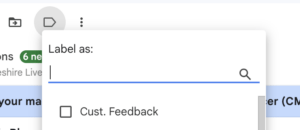
There’s also the option to add colors to each label, making your inbox more visual. Here’s how to set it up:
- Find the label you want to add color to on the left menu bar.
- Click on the 3-dot button next to it.
- Select label color.
- Pick a color.
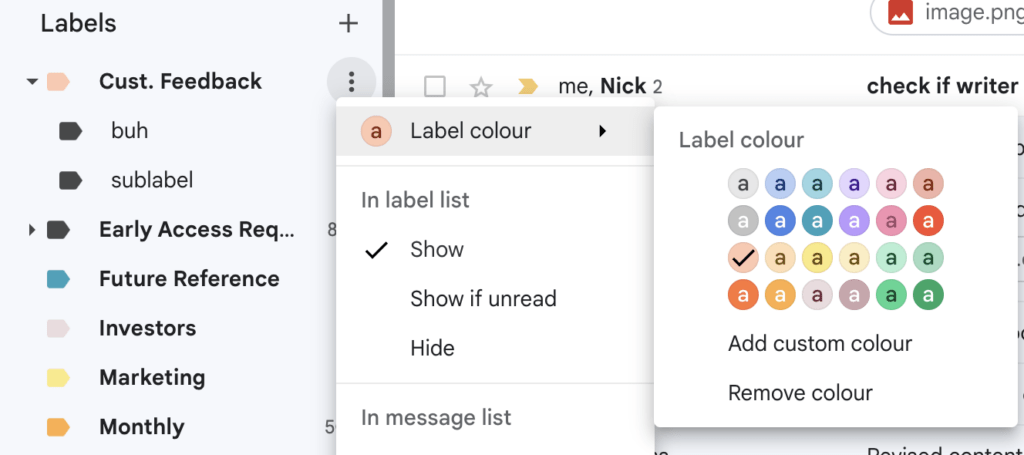
Tabs: more categorization on your inbox
Tabs are another way you can experiment with how to organize Gmail to fit your needs. The basic idea of this system is separating messages into main categories: your regular mail, promotional and sales messages, updates from other apps, social notifications and forum replies.
This system isn’t perfectly tuned, so users might need to tweak the categorization a bit when a message goes into the wrong tab., But the idea is that you can see your more urgent mail without having social media replies or sales pitches interfering. Then, when you have more time, you can switch to the other tab and check those messages.
Of course, you don’t need to use all categories. Here’s how to set them up:
- With your Inbox open, click on Settings > See all settings.
- Select Inbox.
- Select which categories you would like to have as tabs.
- Scroll down and click on Save Changes.
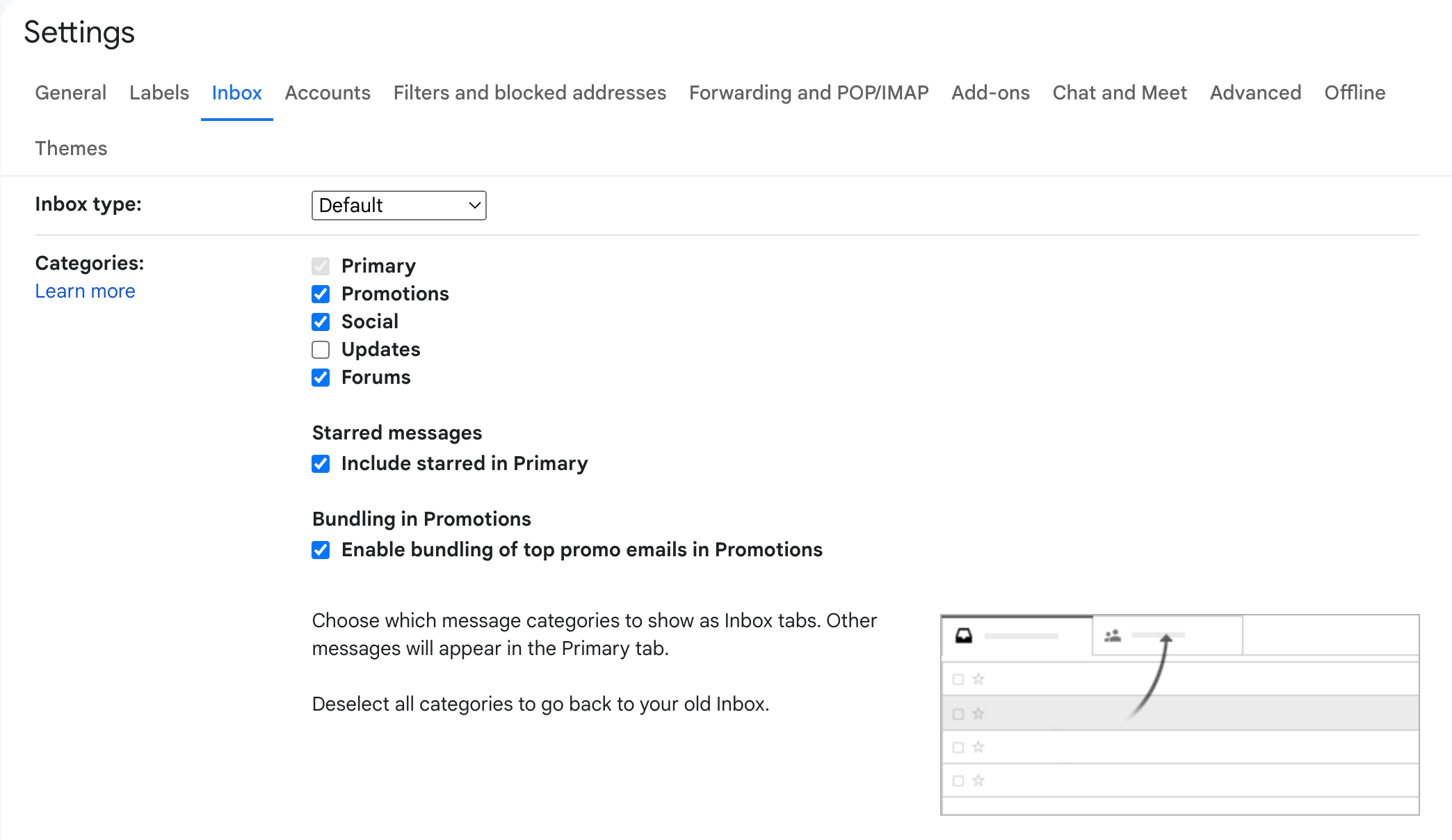
By default, all Categories will start checked. You can uncheck the ones you don’t want to see. It means emails from those categories will load into your “Primary” tab.
Inbox types: send relevant emails to the top of your list
It’s crucial to have the most relevant emails easily visible to you in your inbox. You can pick the type of emails you want to see at the top of your inbox by changing your Inbox Type. Gmail offers the following options, depending on your workflow:
- Important First
- Unread First
- Starred First
- Priority Inbox
To change these settings, do the following:
- With your Inbox open, click on the Settings.
- Scroll down and select inbox type.
Archive: clean your inbox consistently
To organize Gmail, you need to clean up Gmail first. You won’t be able to have your email interface working in your favor if it’s messy and cluttered. So eliminating the messages you don’t need is the very first step.
Something that you should keep in mind is, don’t be afraid to archive and delete old messages. The less you see, the better your productivity, so clean up those old messages. Basically, you should:
- Delete when you’re 100% sure that your conversation is finished and there’s no need to see it again
- Archive when you might need this email in the future, but you’re done with it now.
The Archive folder is just like any other folder in your email, so your messages are safe there. Only instead of cluttering your inbox, they stay hidden unless revisited by another reply or when you search for it. To archive a message, open or select it from your inbox and click on the icon in the top left.

On the other hand, to delete it, you can just click on the trash can icon. It goes to the Trash folder and stays there for 30 days until it’s automatically deleted.
By cleaning up your inbox, you leave only what is essential. That will make it much easier for the next steps of your organization.
Turn Gmail into your Team’s Workspace.
- 2.5x faster email responses.
- 20 hours less spent per month, per team member.
- 40% more deadlines achieved and happier teams.
How to Organize Gmail: 6 tips you need right now
Gmail is an essential tool to keep up with business inquiries, sell your products and collaborate with your team. However, most of the time, there’s a problem: even though tasks begin and end as emails, users still need to switch platforms to complete each step, losing productivity.
Ideally, you should be able to organize Gmail in a way that allows you to fulfill all your business needs seamlessly, with resources that enhance productivity. Here’s how to do it:
1) Use the right inbox tool
The traditional inbox is an email list separated by filters and folders. However, when you are working with a team, this scenario doesn’t foster collaboration. One example is the customer service email: there’s a single point of contact from your client to your help team, a public address they can message.
The agents and managers have to log into this inbox, find the new queries and forward them to their own addresses to work on a solution. Then, go back to the public-facing inbox and reply to the client. This, of course, isn’t ideal for customer service metrics because it takes too long and can lead to overall dissatisfaction from your clients.
There’s a seamless alternative to this issue, however: the Gmail shared inbox. A shared inbox is a collaborative workspace in which authorized users can view, manage and reply to messages in real-time. There, any agents can see new queries and reply from the collective inbox. Here’s how our solution, DragApp, transforms your inbox:
Drag is a Gmail extension that works on your Gmail interface but enhances it with new resources. One that’s key for collaboration is the live chat, that’s available for teams to communicate about their tasks privately.
2) Make your inbox a summary
One of the many ways DragApp can help you streamline your workflow is by offering multiple views. One of them, the Kanban boards, helps you follow the progress of ongoing tasks. The cards are moved through each step as they get completed.
But this isn’t the only way to keep up with current tasks. The Activity log is a resource Drag includes to make sure everyone on the team is up to date on what’s been done when they were offline. The log informs you of any deadline changes, tasks completed, categorizations and new tags added.
3) Use notes in email instead of emailing yourself
This is one of the reasons why inboxes get so messy and cluttered. Because we either use email as a personal reminder or as a messaging tool for internal conversations with other team members. It happens so fast, and before you know it, there are lots of emails with an endless thread of related messages that only clutter your inbox.
Then, if you need to add someone else into the conversation, for instance, asking a team member for help to finish a task, they’ll have to browse through the threads to understand the context of the task itself.
With Drag, you can add notes directly on your emails or tasks to help you understand what are the requirements, essential things you need to know about an action you need to take and share them with collaborators. This is how this fantastic feature looks like:
4) Create and merge cards about each subject
There are scenarios in which you’ll have multiple emails or cards about the same project. If you use your shared inbox for Sales, for example, you might have parallel conversations with different business representatives before you close a B2B deal. In this situation, it’s important to learn how to merge tasks to avoid inbox clutter. If you’re working with a board workflow, here’s how it looks:

- Select and hold the card you want to be merged
- Hold the SHIFT key. You’ll see a message “Merging cards enabled”
- Hover the card onto another one until a blue border appears
- Drop the card that you’ll merge into its new place
- Release the SHIFT key
Now, while each card can have its own deadline, specific notes and files. But when checking into a project, all the related tasks will be merged together and it’ll be much easier to see every step of your progress.
5) Set up automations
Drag can also enhance your workflow with automations that help with how to organize your Gmail. Usually, users have to manually create multiple labels and define what each of them does to an incoming message. With Drag, however, you can access the Automations tab and create custom rules that sort emails across your workspace. Here’s a quick look:

These rules can be personalized according to each workspace’s needs. For example, you can set up a rule that states when a new message is received on your help desk inbox with the subject line containing a question mark, an auto-reply will be sent to the customer thanking them for reaching out and letting them know and agent will write back as soon as possible.
6) Use AI in your favor
Machine learning has transformed digital workspaces and improved overall efficiency. However, to make sure AI is an ally, you need to use it well. AI in customer service, for example, should be a tool to filter out urgent queries, not substitute human contact and your brand’s image.
With Drag, we’re working on tools that streamline your communication. AI Tasks will be able to take key items from your incoming messages and transform them into tasks with actionable checklists and subtasks. With that in use, the task allocation process takes less time and people can start collaborating faster.
Bonus tip: don’t hesitate to unsubscribe
Promotional emails and irrelevant newsletters can be overwhelming. But, just like it happens with old emails, we tend to either forget them or ask ourselves “What if they are useful one day?”. The what ifs, however, can lead to a cluttered inbox.
Again, evaluate how relevant are your current email subscriptions. Remember that the whole idea is to organize your inbox better. Part of the process is, of course reducing the amount of email stored. But that doesn’t help if you don’t also reduce the number of incoming messages.
See what subscriptions aren’t providing anything useful and get rid of those. Sorting through these emails is time-consuming and will harm your productivity.
When you choose to unsubscribe and remove yourself from lists, you save storage space and time to work on your tasks, both now and in the future.
Why learning how to organize Gmail matters
Having a cluttered inbox and not dealing with it will only bring you stress, affecting not only your workflow, but it will also affect everyone in your team. However, organizing your email should not be a distraction that is costing you time and resources.
A tool like Drag offers a real solution that brings you power and control without the need to install expensive software. You’re just a Google Chrome extension away from experiencing the change.
Turn Gmail into your Team’s Workspace.
- 2.5x faster email responses.
- 20 hours less spent per month, per team member.
- 40% more deadlines achieved and happier teams.


